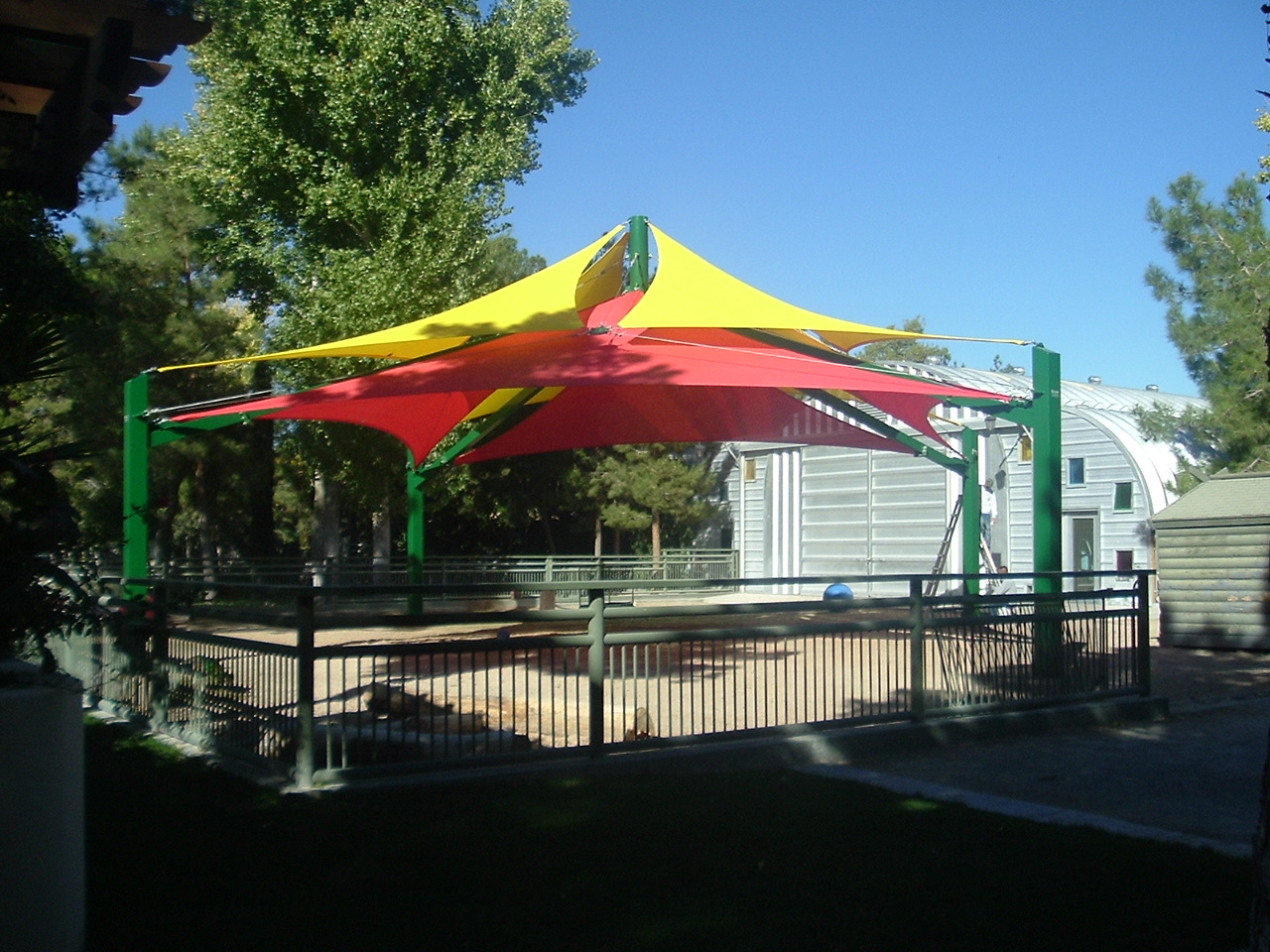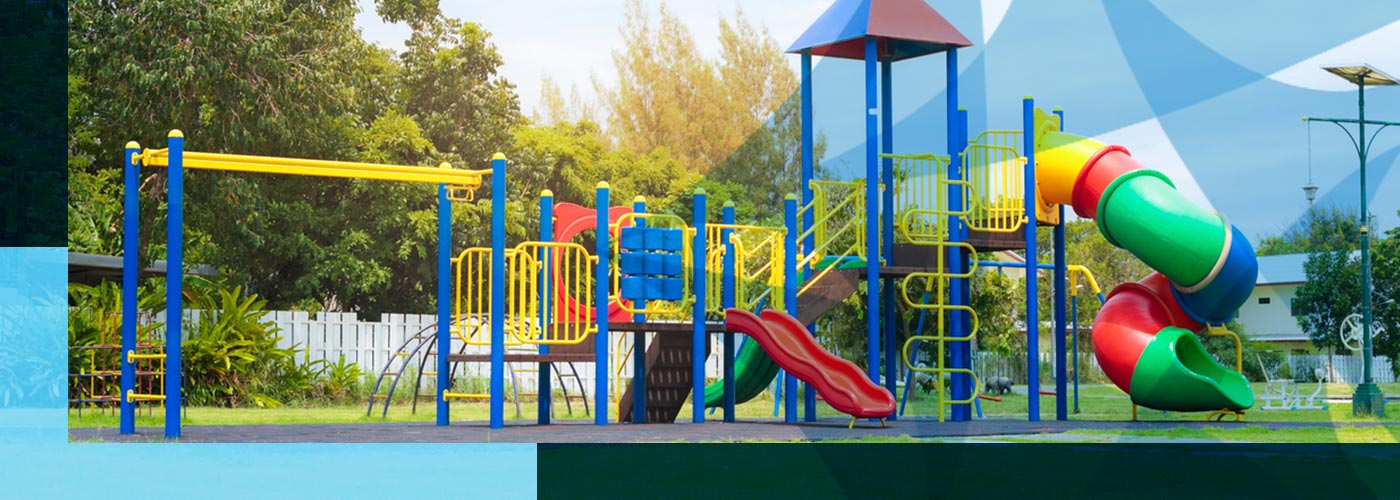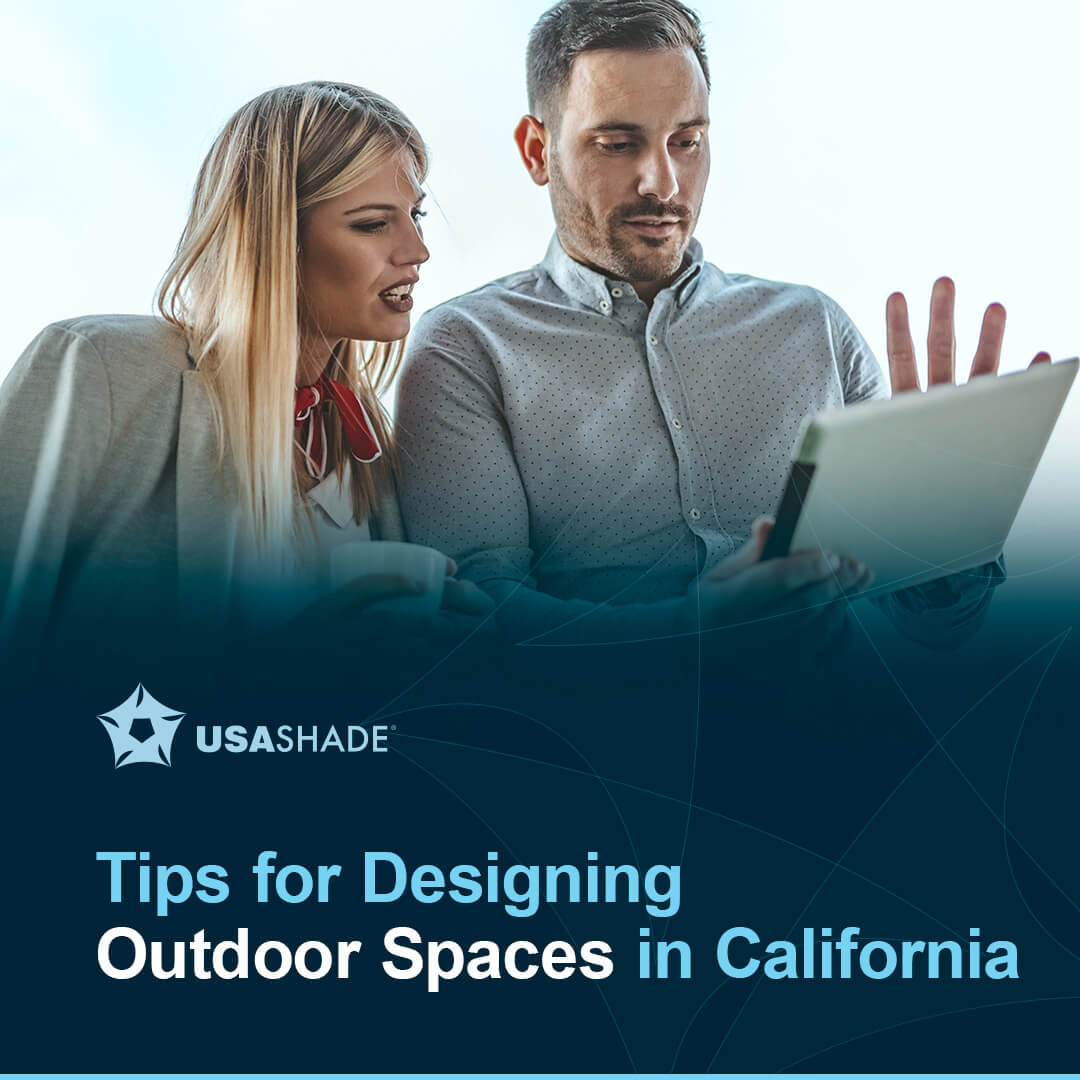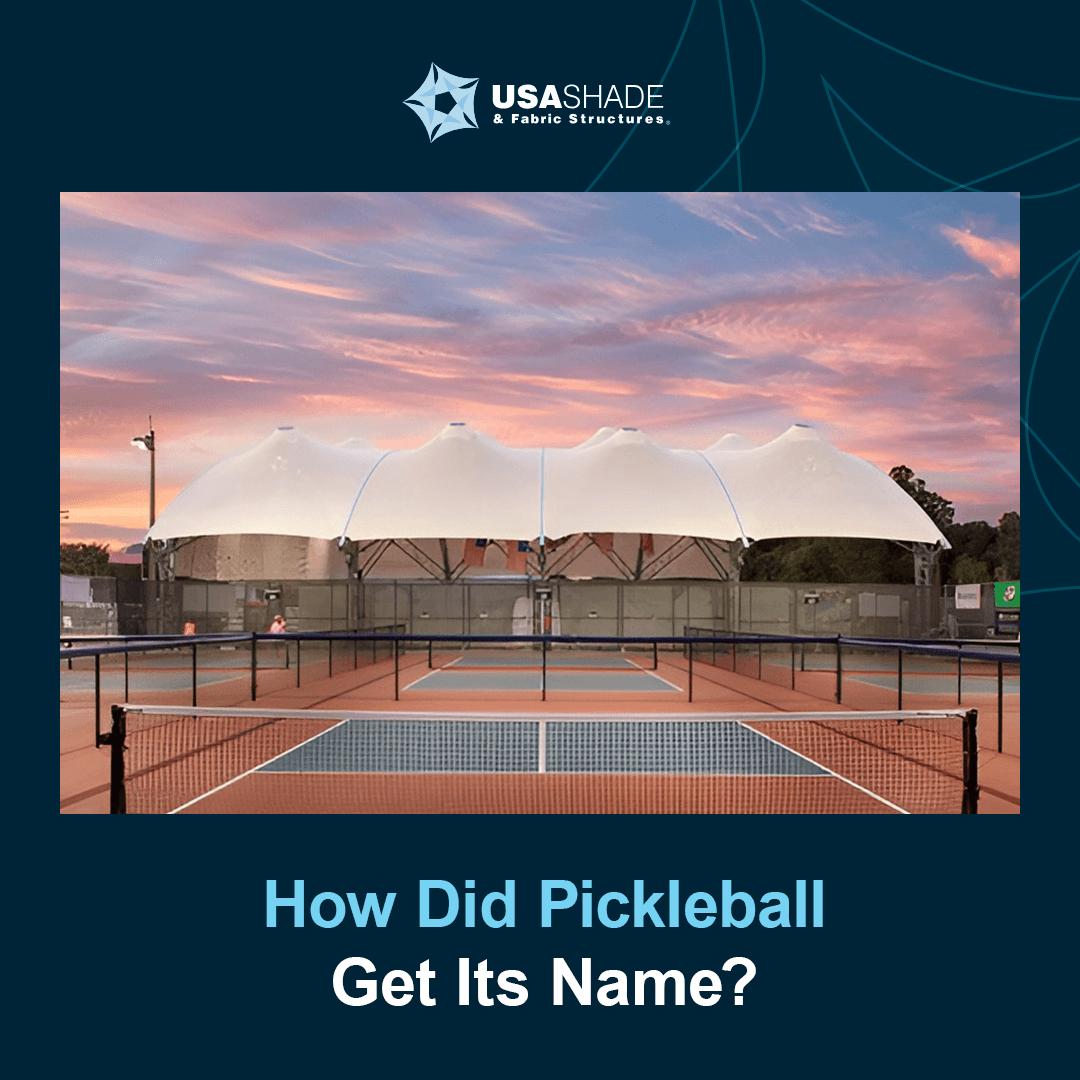Homeowner’s associations (HOAs) are powerful resources in communities. Whether you work in a neighborhood, apartment complex, condo unit, military base or gated community, a playground can offer many services and benefits to your residents.
Benefits of Adding an HOA Playground
Building a community playground can offer several advantages to your HOA. Whether you want to provide more opportunities and connections to your existing members or attract new families, a playground can help you accomplish many goals.
1. Builds a Sense of Community
Playgrounds can become central features where families and community members can gather. In these play spaces, kids can meet others with similar interests to find playmates and friends their age. New kids can introduce themselves to their neighbors and connect with children from their schools. Playgrounds can promote positivity, highlighting similarities between children and celebrating what makes them unique.
These kinds of amenities can be excellent opportunities for adults to connect, as well. When family members bring their kids to the playground, they can meet and talk with other adults. They might learn about other play, social or educational opportunities in the area and discover like-minded people they enjoy being around.
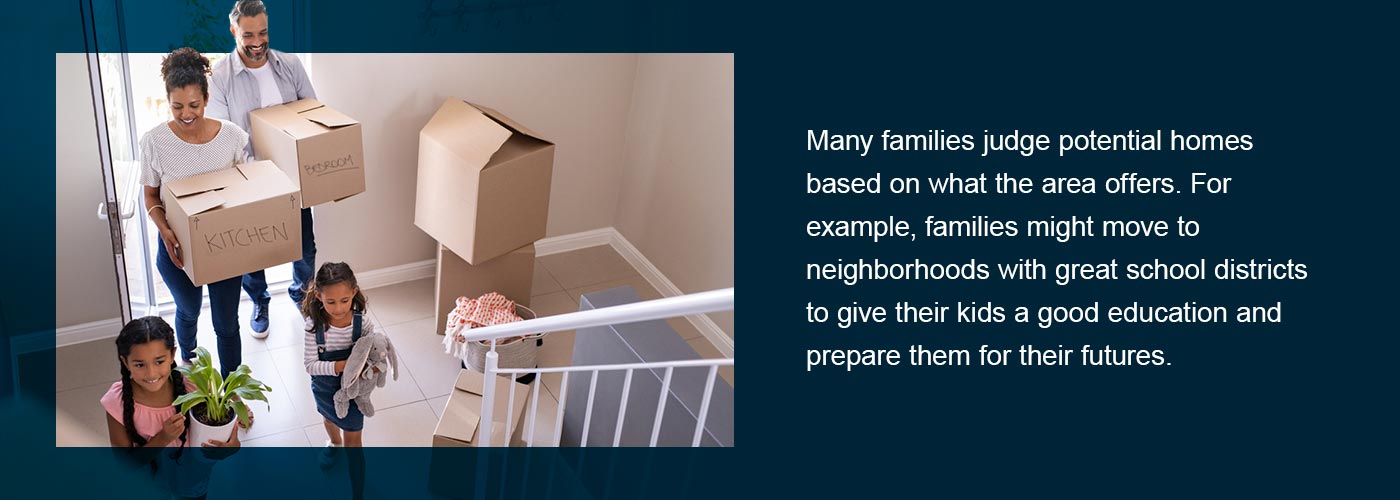

2. Attracts Families to Your Housing Development
Many families judge potential homes based on what the area offers. For example, families might move to neighborhoods with great school districts to give their kids a good education and prepare them for their futures. Social opportunities can appeal to many families, as well. Adults want their children to make friends and feel like part of a community, regardless of where they move. When they see your HOA has a community playground, their perception of your neighborhood might improve and increase their chances of selecting your community.
3. Enhances Health and Wellness
Playgrounds encourage children to engage in active play and social activities, increasing their physical and mental health. Games and equipment can help boost their fine and gross motor development, build muscle and improve cardiovascular health. Whether they’re learning how to control their bodies or refining movements, kids of all ages can benefit from playing.
Playgrounds encourage community members and families to get outside. Playing outdoors can help kids and adults get the necessary vitamins to be healthy.
Because playgrounds are gathering places for communities, children can work on their mental and social development in a welcoming space. They can practice their problem-solving and communication skills when interacting with other kids while under the supervision of adults.
How to Create an HOA Playground
When decide to build your HOA playground, these steps can ensure you include all essential factors for optimized enjoyment and functionality.
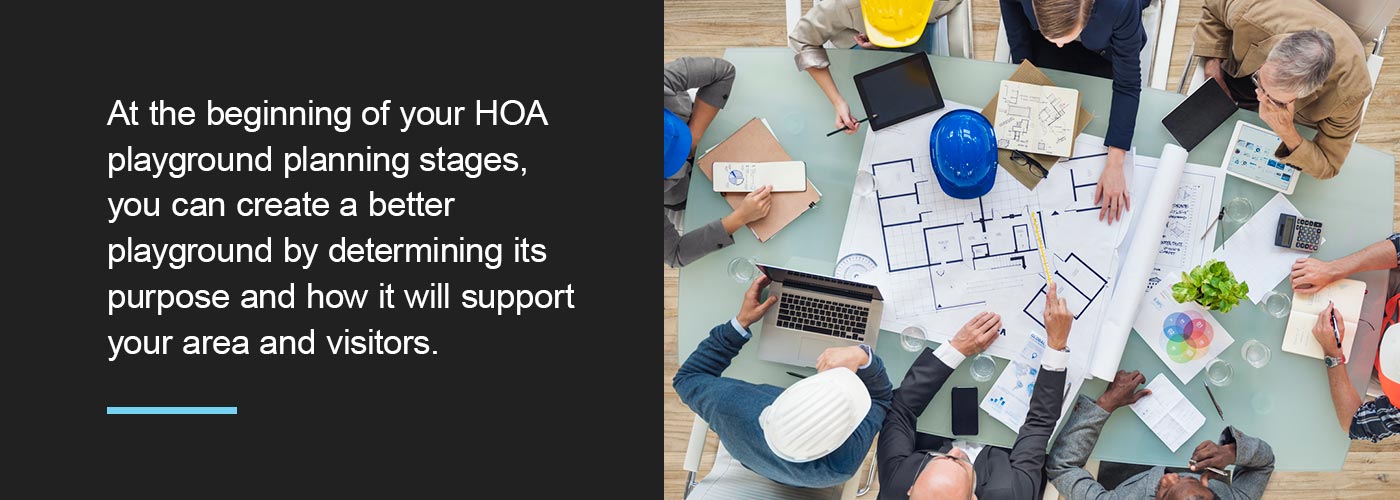

1. Establish Your Playground Goals
Every playground has a specific purpose and goal to serve its community. At the beginning of your HOA playground planning stages, you can create a better playground by determining its purpose and how it will support your area and visitors. Some factors to consider include:
- Target ages: Playgrounds can host various ages and groups of kids, from babies learning to walk to older children with more complex motor skills. Understanding your target age can help specify later planning and design choices. Age will determine product design, function and features. Many playgrounds cater to several ages by incorporating equipment and play opportunities for different groups.
- Location: Picking your site early can identify potential issues or additional design steps you might need. Picking an open area in your community can make design and integration easier, but consider what’s around it. Is your space near a busy street? You might want to build a fence to keep children within the play area. How close is it to living spaces? Pathways, sidewalks and signs help your community members locate your playground.
- Rules and safety: Your playground can ensure the security of your community, so choose a location and features carefully. Creeks look pretty but might encourage children to play in them. Trees provide natural shade, but upturned roots and fallen branches can trip kids while playing. You might promote safety with posted rules and age considerations. Scheduling regular inspections can help you maintain quality as your equipment and amenities age.
- Accessibility: Your playground will support playtime for all children, including those with mobility aids like wheelchairs. The Americans with Disabilities Act (ADA) offers guidelines and standards that projects can follow to ensure you maintain accessibility. These standards can help you better support all community members, like parents with children in strollers.
As you plan, you can also outline the benefits of building a playground. Understanding how your playground can benefit your community can help you advertise your development to residents and get them excited about this endeavor.
2. Create a Playground Budget
Before investing in equipment, you need to determine what you can afford. Many HOAs collect member dues that can help fund your development. Because playgrounds are community features that serve many individuals and purposes, your residents can be powerful fundraising resources. Some ways to build your budget include:
- Applying for grants: Many organizations offer grants and funds for community features like playgrounds. These grants can support planning, development, implementation and maintenance. Each organization provides a different amount, so you can explore options until you find the one you need to complete your budget.
- Hosting events: Your HOA playground planning committee can plan fun events that help increase your budget. Tailor the event to your community’s needs and interests, adding a more personal touch that can boost donations. Events and fundraisers are excellent because you can throw as many as you need until you meet your financial goal. Some popular and influential fundraisers include bake sales, silent auctions, raffles and trivia nights.
- Using crowdfunding: Crowdfunding is a fundraising method where individuals set goals and share donation pages with their friends and family online to encourage people to donate. This fundraising method encourages community member involvement while effectively raising money for your cause. Many people share information through social media platforms, helping expand reach and awareness when you want to increase support for your playground.
Thermometer bars and charts are a great way to show progress and motivate the community to get involved. If you accept donations or volunteers throughout your fundraising process, you can show your appreciation with thank-you notes. Your community members can feel better about their contributions and understand how their efforts helped add to their community.
3. Determine Your Playground Design
Design is a crucial aspect of the planning stage. Your playground’s aesthetic can influence its purpose and how your community receives it. Many factors go into design decisions, including:
- Layout: Your layout can support your available space and the playground’s purpose. Kids need enough room to play, but too much open space can leave them bored. Consider how you place equipment in relation to each other and how pieces flow together. If you’re accommodating multiple ages, you might dedicate areas to different groups to cater to each one’s unique needs.
- Theme: Equipment can come in various themes to spark kids’ imaginations and boost retention rates at playgrounds. Different themes inspire visuals, from pirate ships to natural elements like trees. When you want to draw community members to your playground, having a theme can engage children and impress adults, causing them to choose yours over others.
- Equipment types: Playgrounds usually include several types of equipment. When designing your community playground, choose which options to have so you can create your unique play experience. Some popular options include slides, monkey bars and sensory boards. Your playground’s purpose, target audience and accessibility will determine what equipment you implement.
- Color scheme: Playgrounds can have various color schemes to create a cohesive aesthetic that matches your theme and equipment. Bright colors are great for engaging kids and encouraging socialization, while neutral, natural palettes can offer a calming, welcoming environment. Finding a suitable color scheme can support your playground’s theme and function.
The design stage can help your playground come together, and sharing your choices with your community can increase excitement about this new feature in your HOA.
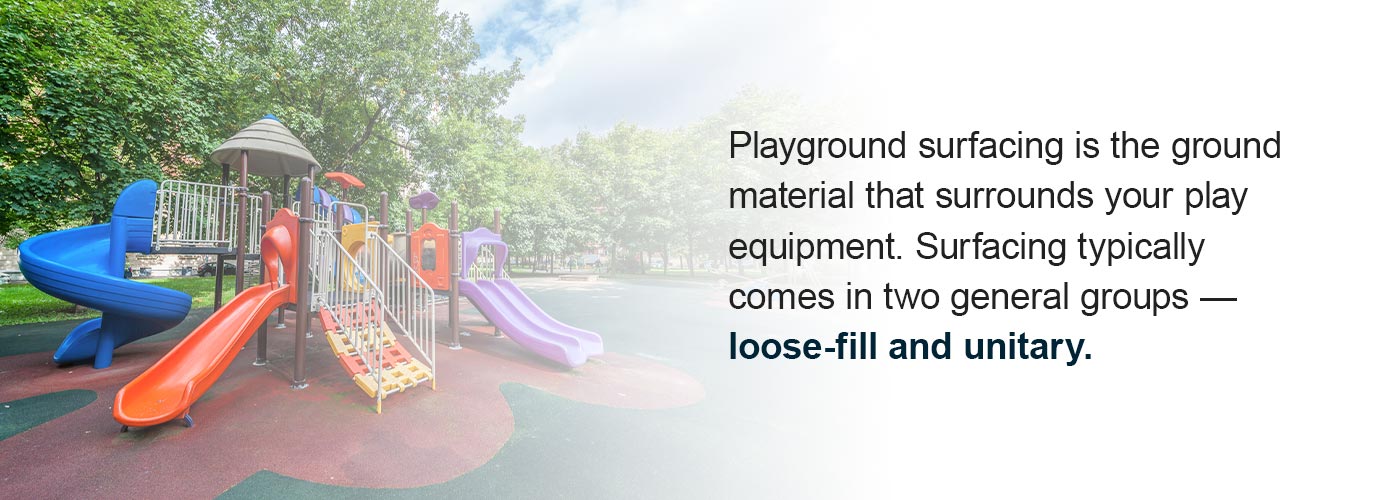

4. Choose a Playground Surfacing
Playground surfacing is the ground material that surrounds your play equipment. Surfacing typically comes in two general groups — loose-fill and unitary. Loose-fill surfacing includes many pieces compacted together, while unitary surfacing is one solid material that can’t break from itself. Both options have several types, including:
- Pour-in-place rubber: Also called solid rubber surface, pour-in-place surfacing involves pouring the substance over a sub-base and letting it set. It creates a very smooth finish that provides excellent cushion. When looking for something ADA-accessible, unitary rubber creates an even surface ideal for visitors with wheelchairs, strollers and other mobility aids. It is also slip-resistant, making it great for children at play. Rubber is very customizable, so you can choose the color that best fits your aesthetic and scheme.
- Rubber tiles: For the same benefits as pour-in-place but increased customization, consider rubber tiles. They are easy to install and maintain, like solid rubber surfaces. Because this option includes separate tiles, you can make engaging and fun designs with different colors and arrangements.
- Artificial turf: Artificial grass surfacing is excellent if you want to create a natural aesthetic at your playground. Technological advancements have made turf softer for increased comfort and enjoyment when playing on this surfacing type. It dries quickly after rain, making it more durable and versatile for your playground. When considering this option, you might need to clean it occasionally and ensure you have quality drainage.
- Engineered wood fiber: Wood chips are a tried and true playground surfacing option that brings a classic, natural look to your playground. Engineered wood fiber is refined and removes sawdust for increased comfort. This option is a loose-fill surfacing, so you will need to check the depth requirements to provide enough cushioning for different kinds of play. Over time, loose-fill tends to erode and compress, so you’ll need to refill when it gets too low.
- Rubber mulch: For a loose-fill rubber option, consider rubber mulch surfacing. Like pour-in-place, it offers excellent cushion and is very soft. You can customize this option to fit your needs and aesthetics. The mulch comes in shredded or nugget forms, so you can choose how you want it to look. You can also coat the mulch in paint to match your color scheme or theme. This mulch often costs less than pour-in-place or rubber tiles, allowing you to find a rubber choice that fits your HOA’s budget.
- Sand or pea gravel: Sand and pea gravel are lower on the recommended list of playground surfacing materials. They are less accessible to children with mobility aids and require more depth to provide enough cushion.
Your surfacing option can create an environment that optimizes accessibility at your playground. With so many choices, you can find the one that matches your needs and aesthetic.
5. Add the Finishing Touches
As your planning and design come to a close, you can prepare your playground for continual use with some final considerations. Other features you add can enhance your playground’s function and make it more appealing to your community. Some options include:
- Amenities: You can encourage guests to stay longer at your playground with the right amenities. Consider adding bathrooms and water fountains by your playground. Families can spend more time when they can address more needs in the vicinity rather than going home. Your amenities can also boost your ADA accessibility. Wide sidewalks and ramps allow children with wheelchairs to play and reach your playground.
- Accessories: Outdoor furniture can offer additional services at your playground. Benches provide places where adults can sit, socialize and watch children as they play. Children can also use benches to rest while playing. Tables can encourage families to eat, play games and spend quality time together while enjoying the weather. Strategically place trash receptacles throughout your playground so your community can keep the space clean.
- Shade and shelter: Shade can increase comfort at your playground, enabling families to stay longer. When integrating shade solutions into playgrounds, you have many options. Shelters, like pavilions and gazebos, offer comprehensive protection where families can gather in any weather condition. These spaces can also inspire people to host parties at your playground. Umbrellas can provide more localized coverage over tables. For ample shade, shade structures can span over larger areas, like equipment. These structures can reduce equipment temperatures on warm days and shield children from the sun.
The final touches you add to your HOA playground design can make it worthwhile for your community members. When you want to create a lasting feature your community loves and uses daily, every detail can bring benefits and better experiences.
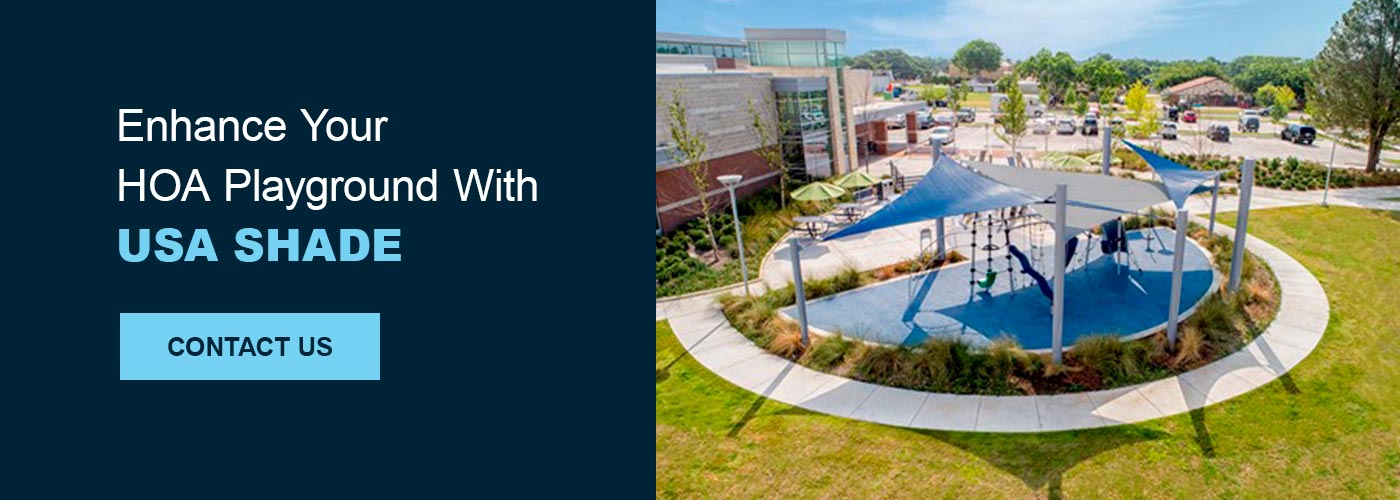

Enhance Your HOA Playground With USA SHADE
Having the right partners and providers is crucial when planning and designing your community playground. Quality equipment and amenities will offer increased longevity and usability, helping you create a community space that’s functional and enjoyable. When it comes to shade structures, USA SHADE provides comprehensive solutions and customization.
USA SHADE has experience working with HOAs and residential communities, allowing us to understand your playground’s needs better for solutions that fit your function. Our structures come in many shapes and colors, so you can select the option that supports your theme or color scheme for a cohesive aesthetic. Design teams are available to work with your HOA for custom creations.
Request a quote today and discover how USA SHADE’s solutions can help you put the finishing touches on your HOA playground.


